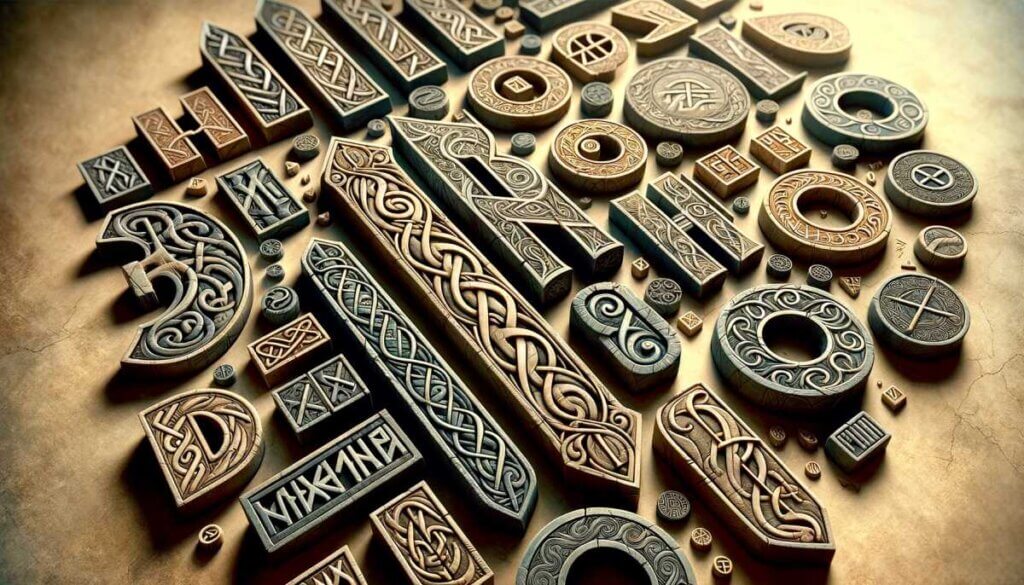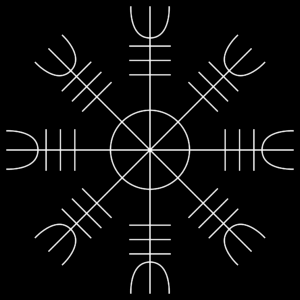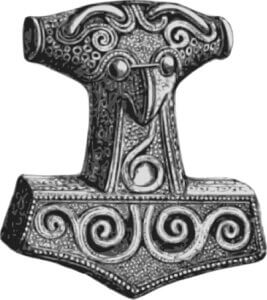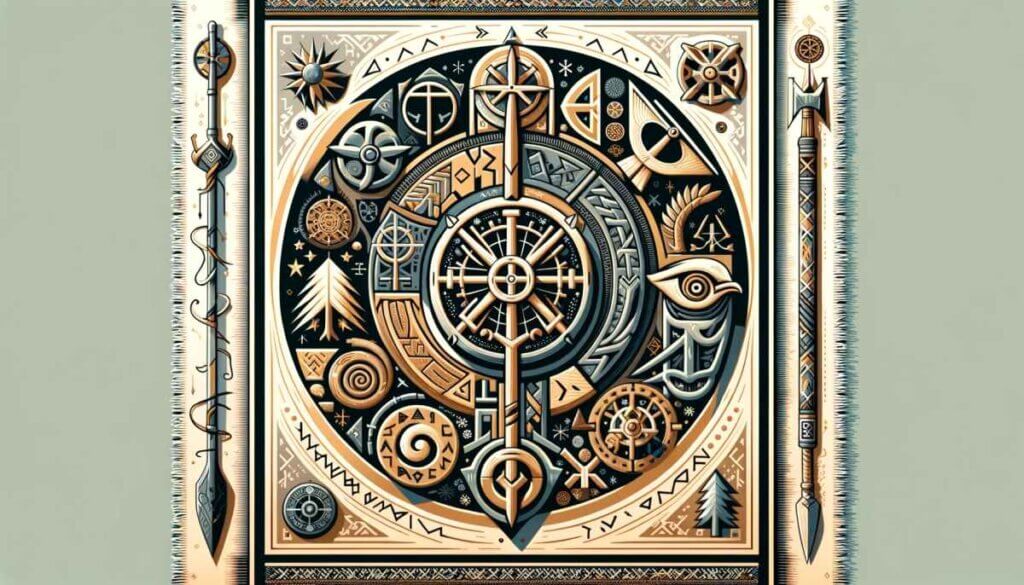Symbols have always held profound significance in the heart of the Nordic lands. These ancient designs, rooted in the era of the Vikings and woven through the fabric of our history, continue to resonate in modern Nordic culture. As a Norwegian with a deep appreciation for my heritage, I find these symbols to be more than mere designs; they are storytellers, gatekeepers of ancient wisdom, and bridges connecting our storied past to the present. This article explores the rich tapestry of Nordic symbols, uncovering their meanings and relevance from the times of the Vikings to contemporary Nordic societies.
Table of Contents
The Roots of Nordic Symbolism
Symbols of the Viking Age
The Legacy of the Norsemen
The Viking Age, a period of significant historical importance for the Nordic countries, was rich in symbolism. The Vikings used various symbols, not just as decorative elements, but as powerful representations of their beliefs and aspirations. These symbols were often connected to Norse mythology, reflecting the Vikings’ deep reverence for their gods and the natural world.

Rune Mysteries
Ancient Alphabets with Deep Meanings
Runes, the old Norse alphabet, were more than just letters. Each rune was believed to hold magical powers and deep meanings, used for divination and marking significant places and objects. The Elder Futhark, the oldest form of the runic alphabets, consists of 24 symbols, each with its unique meaning and story.
Timeless Nordic Symbols and Their Meanings
The Valknut: Knot of the Fallen

Symbol of Odin and the Afterlife
The Valknut, composed of three interlaced triangles, is deeply entwined with Odin, the allfather and chief deity in Norse mythology. This intricate symbol, often found etched on ancient runestones and burial artifacts, is thought to represent the transition from life to the afterlife. It signifies the warrior’s journey, guided by Odin, from the mortal world to Valhalla, the hall of the fallen. The Valknut’s mystique is amplified by its ambiguity and rarity in historical findings, making it a subject of both fascination and scholarly debate.
Yggdrasil: The World Tree

The Cosmic Ash Tree Connecting All Realms
Yggdrasil, the immense ash tree, is a cosmic axis that anchors all realms of existence in Norse cosmology. This majestic tree symbolizes the endless cycle of birth, growth, death, and rebirth. Its roots delve into the depths of the underworld, its trunk stands as the pillar of the present world, and its branches reach up to the heavens, binding together gods, humans, and all creatures in between. Yggdrasil’s enduring presence in Norse myths speaks to the Vikings’ profound reverence for nature and their understanding of a universe woven together in a complex web of connections.
The Helm of Awe: A Symbol of Protection

A Magical Stave for Strength and Fearlessness
The Helm of Awe, or Ægishjálmur, is a potent symbol of protection and empowerment. Its design, a radial matrix of lines with a central point, was believed to shield warriors from harm and instill fear in their enemies. This symbol was not only a talisman of physical protection but also a psychological tool, bolstering the warrior’s courage and resilience in the face of adversity. The Helm of Awe’s use in Viking society reflects the era’s emphasis on the virtues of bravery and the pursuit of honor in battle.
The Hammer of Thor: Mjölnir

A Symbol of Divine Power and Protection
Mjölnir, the famed hammer of Thor, the god of thunder, embodies divine strength and protection. This symbol was ubiquitous in the Viking Age, representing the gods’ guardianship over mankind. Mjölnir amulets were commonly worn for protection, serving as a spiritual shield against malevolent forces. Beyond its protective aspect, Mjölnir also symbolized fertility and blessing, as Thor was also a deity of agriculture and the protector of humanity. The hammer signifies the balance of raw power with the sustaining forces of life, echoing the multifaceted nature of the Norse gods.
Nordic Symbols in the Modern Tapestry

Cultural Resonance in Contemporary Art and Design
Weaving Ancient Symbols into Modern Life
In the modern era, Nordic symbols have moved beyond their mythological and historical origins, evolving into icons of cultural significance and aesthetic appeal. They are now seamlessly integrated into various aspects of art, fashion, and design. Jewelry designers often incorporate symbols like the Valknut or Mjölnir into their creations, not only for their visual beauty but also for their deep connections to strength, protection, and heritage. In the realm of tattoos, symbols like Yggdrasil and the Helm of Awe are favored for their intricate designs and profound meanings, creating a personal and lasting connection to Nordic lore.
Emblems of Identity and Ethos
The Timeless Appeal of Nordic Heritage
Nordic symbols in today’s context have become emblems of identity, connecting individuals to their ancestral roots and the broader values of Nordic culture. They are more than decorative motifs; they are expressions of identity, embodying the timeless values of bravery, resilience, and a deep respect for the natural world. These symbols have transcended geographical boundaries, appealing to people worldwide who find resonance in their meanings and aesthetic.
Nordic Symbols as Global Cultural Ambassadors
Spreading Nordic Values Worldwide
On the global stage, Nordic symbols act as cultural ambassadors, showcasing the rich heritage and enduring values of the Nordic countries. In a world increasingly fascinated by Viking history and Norse mythology, these symbols serve as bridges, connecting the past to the present and the Nordic region to the world. They not only represent the historical and mythological past of the Nordic countries but also speak to contemporary values such as environmental stewardship, social equality, and the pursuit of knowledge and exploration.
The Role in Popular Media and Literature
Symbols Transcending Time and Space
Modern media and literature have played a significant role in popularizing Nordic symbols, often portraying them in contexts that range from historical to fantastical. Television shows, movies, and books that delve into Viking history or Norse mythology have brought these symbols to a broader audience, igniting interest and appreciation for Nordic culture. This portrayal not only entertains but also educates, allowing for a deeper understanding and appreciation of the symbols and the stories behind them.
Nordic symbols carry with them the echoes of ancient sagas, the wisdom of forebears, and the spirit of the rugged Nordic landscapes. They remind us of the enduring legacy of the North – a legacy that continues to inspire, captivate, and influence people around the globe.
Conclusion
Nordic symbols are more than relics of a distant past; they are vibrant, living representations of a rich cultural heritage. They link us to the mystic world of the Vikings, carrying their stories and wisdom into our modern lives. As a Norwegian deeply connected to this legacy, I find these symbols to be a source of inspiration and a reminder of the enduring strength and spirit of the Nordic people.








